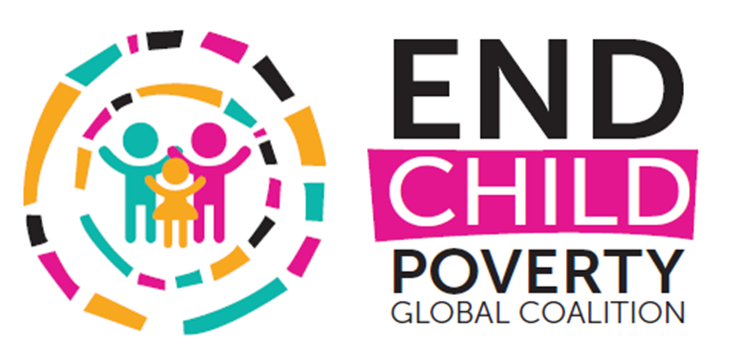How are multidimensionally poor children affected by conflict?
By OPHI - Sabina Alkire, Tshoki Zangmo and Maya Evans
Over half of the 1.1 billion people living in multidimensional poverty worldwide are children, according to the 2024 update of the global Multidimensional Poverty Index (MPI). The 2024 global MPI, published annually by the Oxford Poverty and Human Development Initiative (OPHI) and the Human Development Report Office of the United Nations Development Programme, was released on the International Day for the Eradication of Poverty. This year’s joint report reveals the extent of child poverty around the world using the MPI and explores the links between poverty and conflict.
What are the levels of child poverty globally?
584 million children are deprived in one-third or more of the ten weighted poverty indicators measured by the global MPI. This internationally comparable index provides a comprehensive picture of poor people’s health, education and living standards across over 100 countries.
“Out of 6.3 billion people included in the MPI nearly 28 per cent of children are living in multidimensional poverty, which is more than double the rate for adults at 13.5 per cent. ”
Over half of these children, about 317 million, live in Sub-Saharan Africa, and 184 million are in South Asia.
Child poverty isn’t just an issue limited to countries with high overall poverty. Even in countries with low national poverty levels, child poverty remains a concern. For example, in Argentina, where only 0.4 per cent of the population is multidimensionally poor, children make up 53.7 per cent of that group. In Turkmenistan, where the poverty rate is 0.2 per cent, children account for 53.4 per cent of poor people. Similarly in Tonga, 0.9 per cent of the population is poor, and 56.0 per cent of them are children.
These numbers reveal a troubling reality; children bear a disproportionate burden of poverty across various countries. This highlights the importance of disaggregating poverty data by age and focusing on the lived experience of children wherever they are growing up.
How is conflict affecting children?
In addition to updating the levels and trends of multidimensional poverty globally, the 2024 global MPI report also explores the theme of conflict and its links with poverty. It reveals that countries at war have higher deprivations in every one of the ten indicators of multidimensional poverty than in non-conflict settings.
So, what does this mean for children living in households that are both poor and at risk of violent conflict? In conflict-affected countries, children face more time in the dark, with over one in four poor people lacking access to electricity, compared to just over one in twenty in more stable regions. School attendance plummets,17.7 per cent of the poor population have a primary-school-aged child not in school, compared to 4.4 per cent in non-conflict settings. More households in conflict zones have an undernourished member of any age under 70 (20.8 per cent vs. 7.2 per cent). And, most heartbreakingly, a higher proportion of households have experienced the death of a child in the preceding five years (8 per cent vs. 1.1 per cent).
The outlook for children in Afghanistan
The 2024 global MPI report highlights the dire situation for children in Afghanistan. Afghan children bear a disproportionate share of multidimensional poverty. In 2022/23, 70 per cent of children were living in poverty compared to 57.8 per cent of adults. This means that six out of ten poor people in Afghanistan are children– even higher than the global average. There are about 5 million more poor children than adults in Afghanistan, with 15.5 million poor children compared with 10.8 million poor adults. Deprivations in school attendance and nutrition contribute the most to poverty.
Looking at the trend data for Afghanistan from 2015/16 to 2022/23, a period marked by a sharp increase in poverty, the incidence of poverty among children increased by seven percentage points, whereas it increased by three percentage points among adults. These figures may even underestimate the true level and change of poverty due to the lack of nutrition data in 2015/16 and cooking fuel data in 2022/23.
Children’s education has been particularly disrupted by decades of armed conflict, socio-political and humanitarian crises, and natural disasters. Between 2015/16 and 2022/23, the proportion of Afghans living in poor households with out-of-school children rose significantly, from 35 per cent to 43.8 per cent. This issue particularly affected children living in rural areas, where the proportion increased from 42.3 per cent to 52.7 per cent, compared to an increase from 12.3 per cent to 17.7 per cent in urban areas. The ban on the education of girls beyond year six by the de facto authorities will also severely exacerbate this situation, resulting in a generation of young women denied their basic right to education. This bleak outlook for girls means limited employment opportunities and has increased the risk of early child marriage or domestic violence.
Shining a light on child poverty is a global imperative
This year’s report highlights the persistent need to keep child poverty at the forefront of our efforts, regardless of a country’s income level or conflict status. Beyond the report lies the global Multidimensional Poverty Index which is an open-source dataset and is available to all actors interested in data on child poverty. OPHI’s 2024 Data Table 3 provides detailed, age-disaggregated data (including ages 0–9, 10–17 and 0–17) for 112 countries. It offers a range of statistics such as the incidence, intensity and MPI value of multidimensional poverty. The table also includes censored and uncensored headcount ratios to enable analysis of the indicators in which children are deprived, and percentage contributions of the indicators to MPI value.
You can visit the Global MPI 2024 webpage for more information and download the report.
Sabina Alkire is the Director of the Oxford Poverty and Human Development Initiative (OPHI). Tshoki Zangmo is a Researcher at OPHI. Maya Evans is the OPHI Head of Communications.


